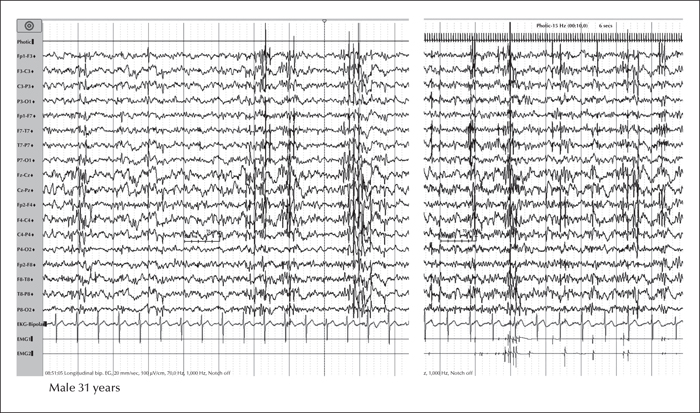Epileptic Disorders
MENUGOSR2: a progressive myoclonus epilepsy gene Volume 18, supplément 2, September 2016
Illustrations
University of South Australia, and Sansom Institute for Health Research,
Adelaide, Australia
- Mots-clés : Progressive myoclonus epilepsy, GOSR2, myoclonus, photosensitivity, scoliosis, ataxia
- DOI : 10.1684/epd.2016.0848
- Page(s) : 111-4
- Année de parution : 2016
GOSR2-associated PME is associated with a homozygous mutation in GOSR2 (c.430G>T, p.Gly144Trp), a Golgi vesicle transport gene. The functional effect of this mutation is a loss of function that results in failure of the GOSR2 protein to localize to the cis-Golgi. The main clinical features of the GOSR2-associated PME are early-onset ataxia, areflexia, action myoclonus and seizures, scoliosis, elevated creatine kinase levels, relative preservation of cognitive function until the late stages of the disease, and relentless disease course. Severe photosensitive myoclonus is a common feature. GOSR2-associated PME is a rare disease with very few cases reported so far and it can be expected that the identification of further patients will contribute to expanding the phenotype and genotype of this condition.


